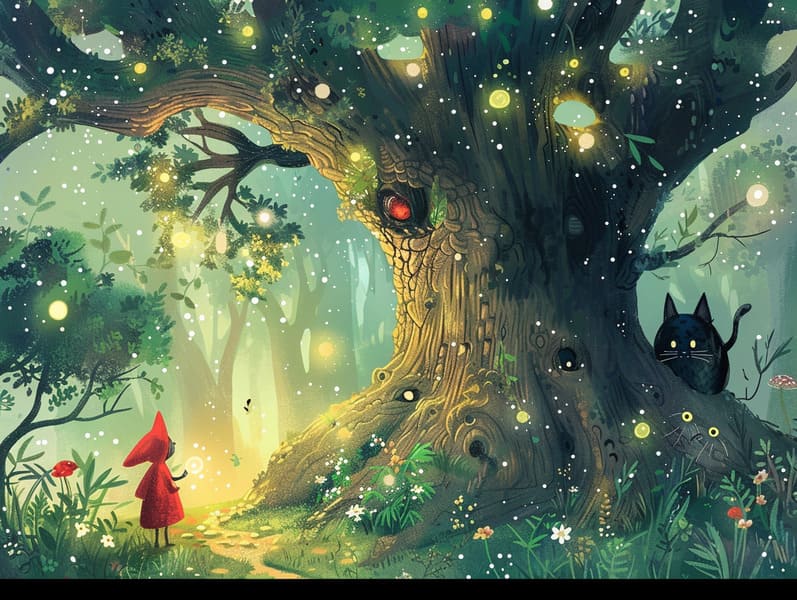The Evolution of Fairy Tales and the Immortal Fascination.
The Evolution of Fairy Tales and the Immortal Fascination.
Blog Article

Classic fairy tales have timeless appeal. These stories have been relayed from one generation to the next long before they were ever documented. They originated from a variety of societies, including African traditions. They were initially shared among elders, often carrying themes and messages pertaining to the societal norms and beliefs of the time.
Jacob and Wilhelm Grimm, the two Grimm brothers, were among the first to collect and release many of these beloved fairy tales. Their anthology, "Grimm's Fairy Tales," included tales like "The Story of Cinderella," "Hansel and Gretel," and "Schneewittchen," which have since become pillars in the world of famous fairy tales. Similarly, Hans Andersen's whimsical tales, such as "The Mermaid's Tale," and "The Ugly Duckling," have touched hearts worldwide, establishing their place in the pantheon of iconic fairy tales.
Despite their age, these tales remain as applicable as ever, especially as children's bedtime stories. These delightful tales are now available in various formats, including colorful picture books, enchanting animations, and digital storybooks.
Their ongoing significance can be credited to several delightful features:
Valuable Lessons: Ancient fairy tales often whisper important moral lessons. Fairy tales like "The Tale of the Boy Who Cried Wolf" teach the importance of integrity, while "The Story of the Tortoise and the Hare" point out the virtues of steadfastness and humility. These tales offer little ones clear distinctions between virtue and vice, molding their moral compass in a gentle yet significant way.
Kindness and Comprehension: Old fairy tales frequently depict heroes facing challenges and problems, prompting audiences to sympathize with their struggles and back their triumphs. For instance, "Beauty and the Beast" conveys the necessity of looking beyond appearances to see the inner self of a being, enhancing tenderness and discernment.
Cultural Recognition: Many classic fairy tales are interwoven with the cultural contexts from which they grew. Engaging with these fairy tales can provide captivating looks into different ways of life, developing a sense of world understanding and acknowledgment.
Imagination and Innovation: The whimsical elements in traditional fairy tales—mythical entities—awaken children’s inventiveness. These fairy tales bring readers to fantastical realms, stimulating fantasy-filled thoughts and a sense of marvel that stays a lifetime.
Timeless fairy tales are not only mesmerizing but also informative. They work as fascinating tools in nurturing various intellectual and emotional capacities in little ones. When traditional fairy tales are voiced, they improve language proficiency by showing new language and sophisticated sentence structures. This practice also boosts auditory skills and focus, as children stay focused, enthusiastic to see what happens next.
Furthermore, reflecting on the themes and characters of old fairy tales can advance analytical skills and reasoning skills. Young ones are taught to notice patterns, forecast, and know cause and effect. These talks also facilitate children reveal their thoughts and feelings, enhancing their emotional intelligence.
In today’s information age, the abundance of digital storybooks has made these narratives more obtainable than ever. Online resources and software offer comprehensive collections of ancient fairy tales that can be seen or played anytime, anywhere. Fairy tales voiced are particularly common, featuring an engaging way for kids to engage with these charming stories. Read-aloud stories and narrated videos carry characters and settings to life, often supplemented by charming musical scores and background music that improve the storytelling journey.
The unfading fascination of old fairy tales lies in their ability to evolve to the present while retaining their core messages. Contemporary reimaginings of these narratives often introduce more varied characters and modern settings, making them accessible to today’s audience. However, the underlying themes of boldness, goodness, and impartiality remain unchanged, continuing to affect young readers of all ages.
Ancient fairy tales also offer a sense of comfort and understanding. They highlight a neat narrative with a unmistakable beginning, middle, and end, often winding up with the resolution of conflicts and the triumph of virtue over vice. This assuredness can be solacing for the young, furnishing a sense of constancy in an inconstant world.
Old fairy tales continue to enchant and train new generations, maintaining their grandeur and impact in modern society. As children's bedtime stories, they deliver a perfect blend of fantasy and learning, backing moral values, empathy, and creativity. The accessibility of digital storybooks and the popularity of fairy tales recited assure that these ancient fairy tales remain obtainable to new generations.
By guarding and broadcasting these tales, we continue to honor the rich tapestry of storytelling and cultural heritage. Whether you are exploring a colorful picture book, seeing a internet library, or listening via an audiobook, the loveliness of classic fairy tales is always within reach. These tales illustrate of the invariable presence of storytelling and its ability to find it here bring us together across eras and regions.
Be it you are browsing a beautifully illustrated book, perusing a cyber collection, or listening via an narrated book, the allure of traditional fairy tales is always within reach.
These narratives remind us of the timeless strength of fairy tales and its ability to hold us together across eras and regions, weaving a spell that charms and informs alike.